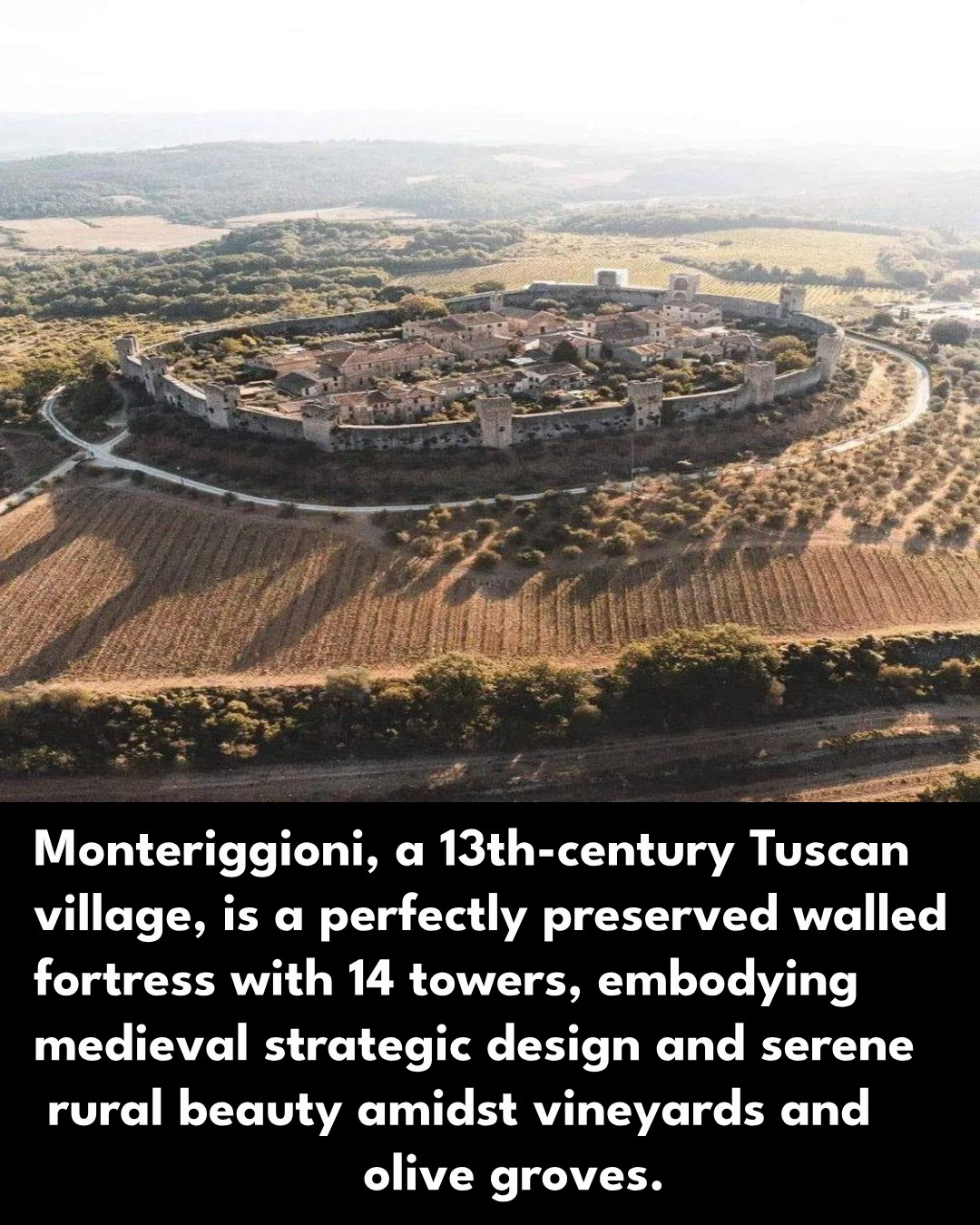
Monteriggioni, nestled in the rolling hills of Siena, Italy, was built in the early 13th century as a military outpost by the Republic of Siena. Its ring of 14 stone towers and near-perfect circular walls evoke an era of constant vigilance—where cities were fortresses, and silence between battles was cherished. This medieval stronghold, remarkably untouched by time, remains one of the most iconic examples of feudal military architecture in all of Europe.
From above, the village appears like a crown set into the Tuscan earth, its battlements rising above a sea of vineyards and olive groves. The walls, nearly 570 meters in circumference, were constructed with careful intent—to both defend and intimidate. Each of the towers once served as watchpoints, allowing Sienese soldiers to scan the horizon for Florentine invaders. The cobbled streets inside still echo with stories of merchants, soldiers, and pilgrims traveling along the Via Francigena toward Rome.
But beyond its defensive genius, Monteriggioni holds something quieter and more eternal: a sense of peace carved from war. The golden fields, the slow rhythm of rural life, and the vines twisting beneath the shadows of towers remind us that even structures born from conflict can cradle serenity. Could any modern city still be so complete, so still, so perfectly held within the past?
Have you ever stood in a place where history seems to hold its breath?





